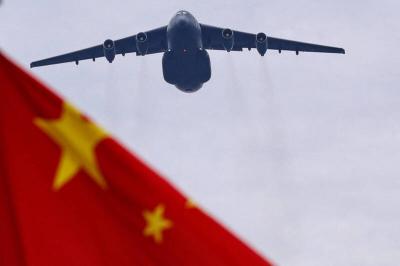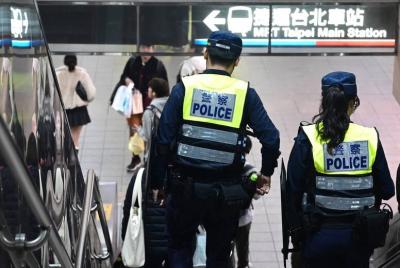Failure to yield right-of-way was the leading contributor to fatal traffic accidents last year for the second consecutive year, according to statistics released by the Ministry of Transportation and Communications and the National Police Agency yesterday.
In 2012, drunk driving was still the leading cause of fatal accidents, followed by failure to yield violations and failure to comply with traffic signals, National Police Agency traffic division head Fang Yang-ning (方仰寧) said.
However, failure to yield violations has outranked drunk driving as the main culprit of deadly accidents for two straight years since 2013, he added.
Most violations involved vehicles on a branch road failing to yield to vehicles on an arterial road, vehicles on the left failing to yield to vehicles on the right, vehicles on a route with fewer lanes failing to yield to vehicles on a route with more lanes, or vehicles taking a turn failing to yield to vehicles going forward, he said, adding that most accidents occurred where there are no signs or traffic lights.
A total of 258 category A1 accidents — where the injured party died within 24 hours of the accident — were related to drivers and motorists’ failure to yield right-of-way last year, with 260 deaths and 107 injuries, Fang said.
Category A2 accidents — non-fatal traffic accidents — in association with failure to yield violation peaked at 63,507 cases, with 86,765 people injured, he said.
The police issued a total of 19,538 citations for failure to yield violations last year, but that failed to stem unruly driving, he said.
Failure to yield the right-of-way can be seen at junctions and alleyways, with vehicle operators not bothering to stop or slow when crossing an intersection, resulting in a great number of traffic collisions, he said.
Feng Chia University transportation professor Lee Ke-tsung (李克聰) said that Taiwanese always yield seats on public transport, but fail to yield when on the road, which he said is a “national shame.”
Lee said he has witnessed many motorists near his university who do not slow at all when crossing an intersection, suggesting that vehicle operators are unacquainted with vehicle right-of-way rules.
The agency called for motorists to come to a complete stop whenever the traffic light turns yellow or wherever there is no sign or traffic light at an intersection.

Beijing could eventually see a full amphibious invasion of Taiwan as the only "prudent" way to bring about unification, the US Department of Defense said in a newly released annual report to Congress. The Pentagon's "Annual Report to Congress: Military and Security Developments Involving the People's Republic of China 2025," was in many ways similar to last year’s report but reorganized the analysis of the options China has to take over Taiwan. Generally, according to the report, Chinese leaders view the People's Liberation Army's (PLA) capabilities for a Taiwan campaign as improving, but they remain uncertain about its readiness to successfully seize

Taiwan is getting a day off on Christmas for the first time in 25 years. The change comes after opposition parties passed a law earlier this year to add or restore five public holidays, including Constitution Day, which falls on today, Dec. 25. The day marks the 1947 adoption of the constitution of the Republic of China, as the government in Taipei is formally known. Back then the Chinese Nationalist Party (KMT) governed China from Nanjing. When the KMT, now an opposition party in Taiwan, passed the legislation on holidays, it said that they would help “commemorate the history of national development.” That

Taiwan has overtaken South Korea this year in per capita income for the first time in 23 years, IMF data showed. Per capita income is a nation’s GDP divided by the total population, used to compare average wealth levels across countries. Taiwan also beat Japan this year on per capita income, after surpassing it for the first time last year, US magazine Newsweek reported yesterday. Across Asia, Taiwan ranked fourth for per capita income at US$37,827 this year due to sustained economic growth, the report said. In the top three spots were Singapore, Macau and Hong Kong, it said. South

Police today said they are stepping up patrols throughout the Taipei MRT system, after a social media user threatened to detonate a bomb at an unspecified station this afternoon. Although they strongly believe the threat to be unsubstantiated, Taipei Metro police and the Railway Police Bureau still said that security and patrols would be heightened through the system. Many copycat messages have been posted since Friday’s stabbing attacks at Taipei Main Station and near Zhongshan MRT Station that left three dead and 11 injured, police said. Last night, a Threads user in a post said they would detonate a bomb on the Taipei